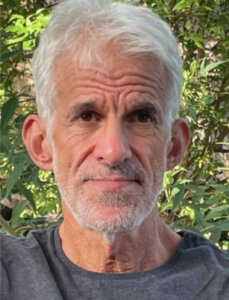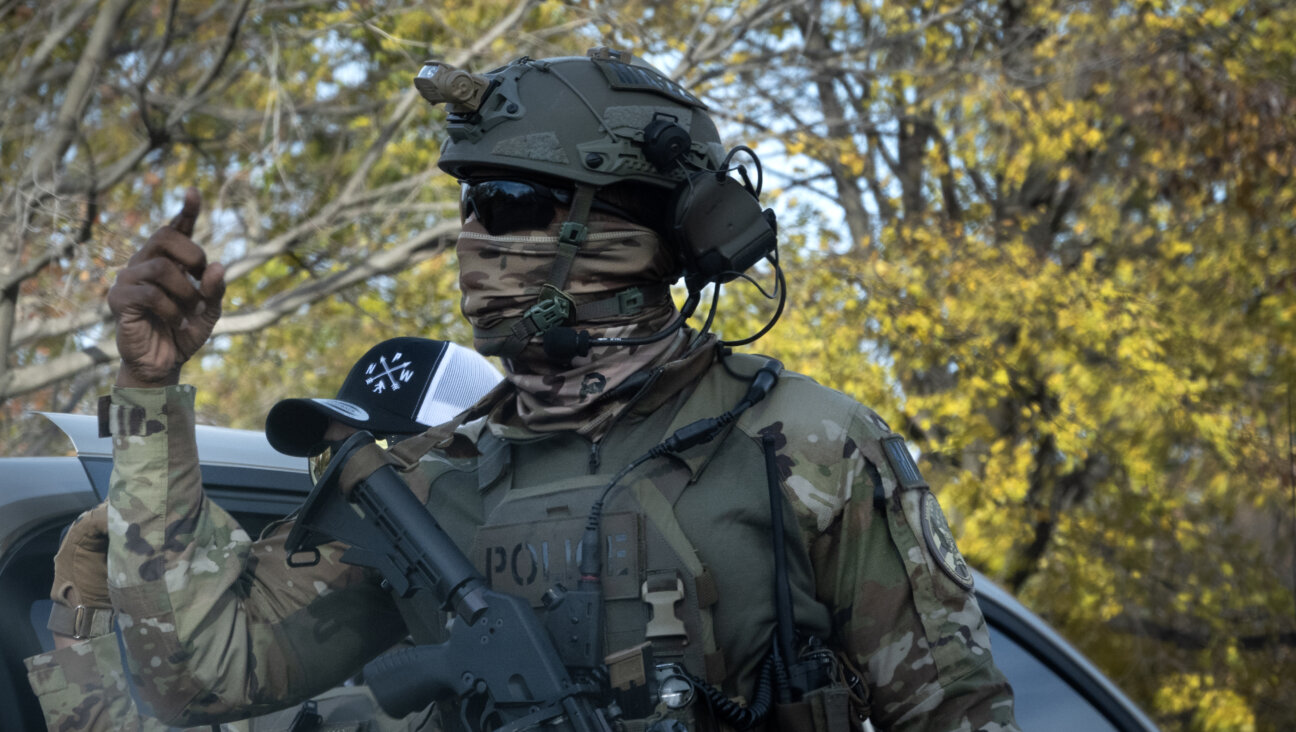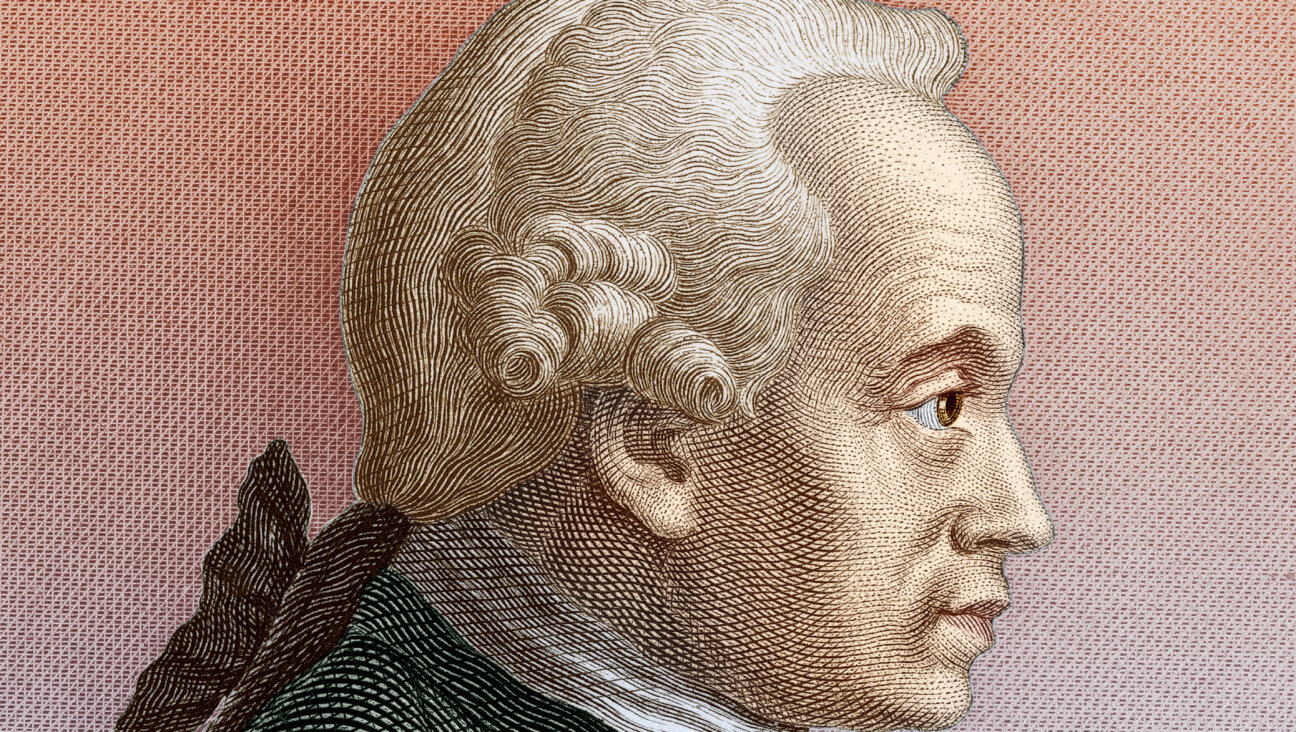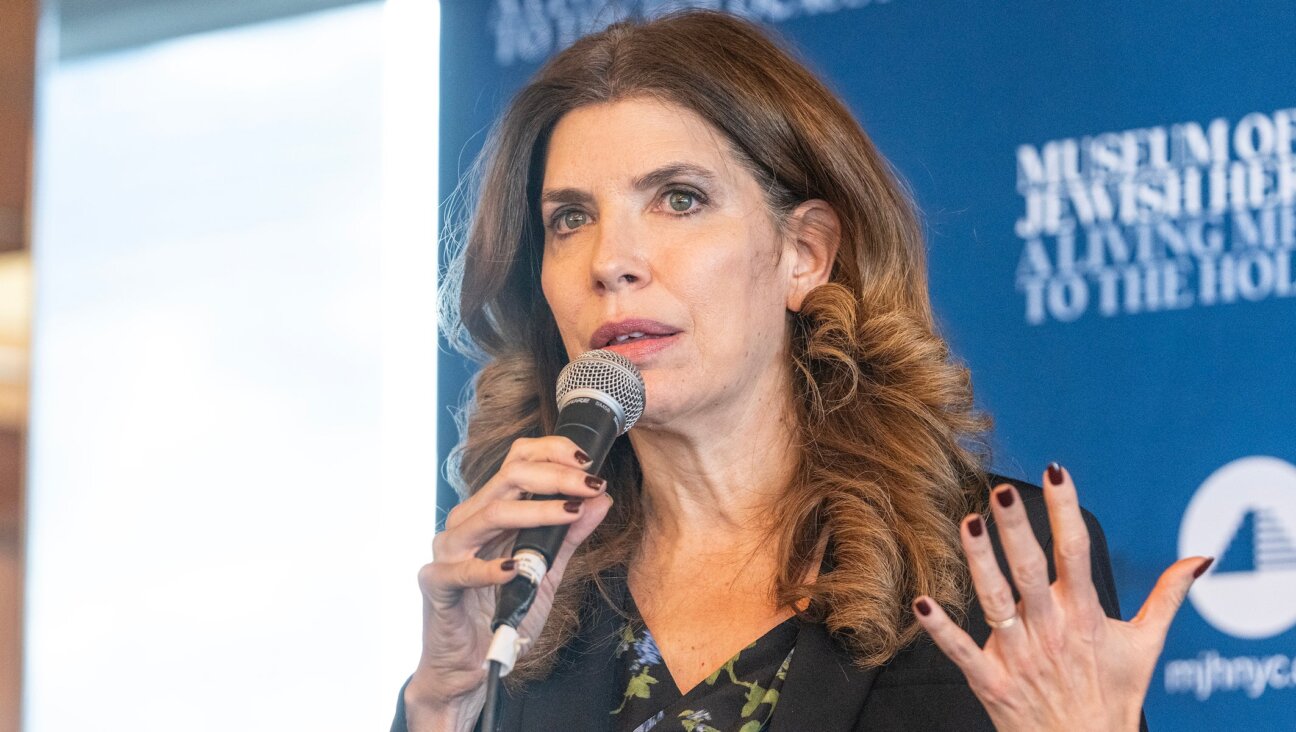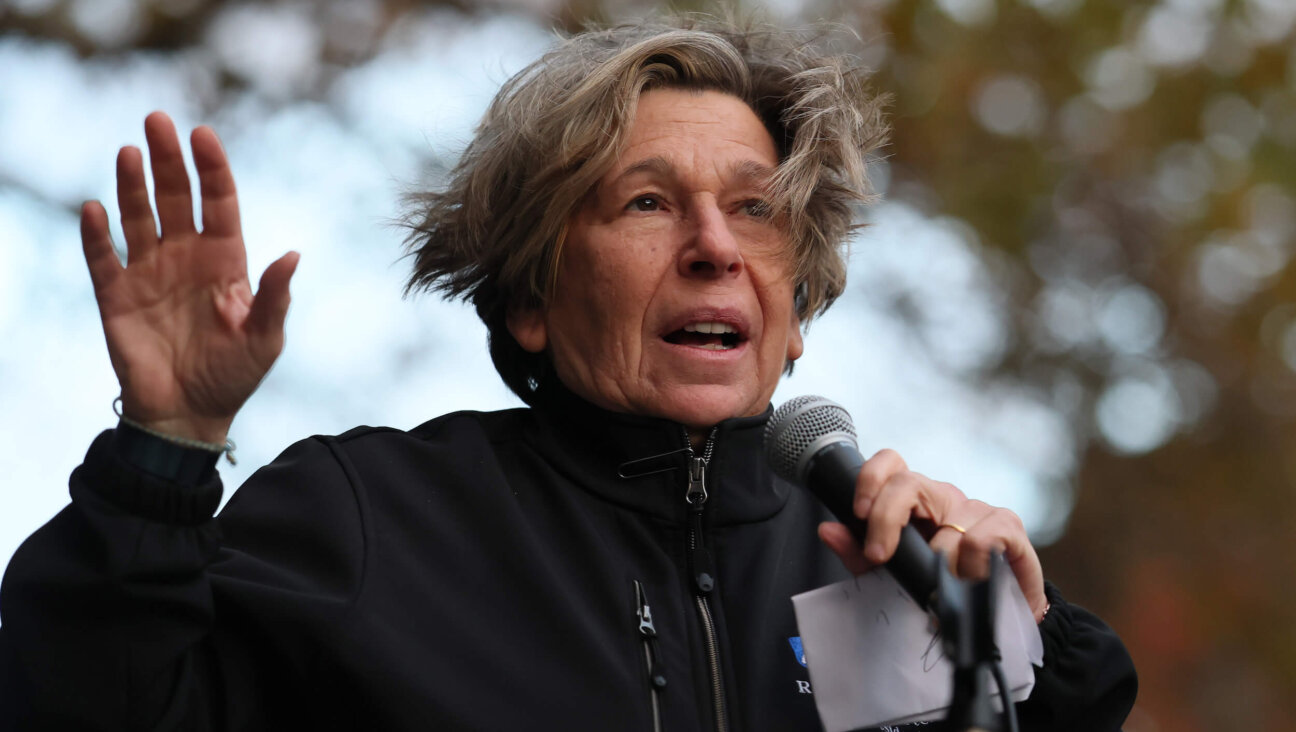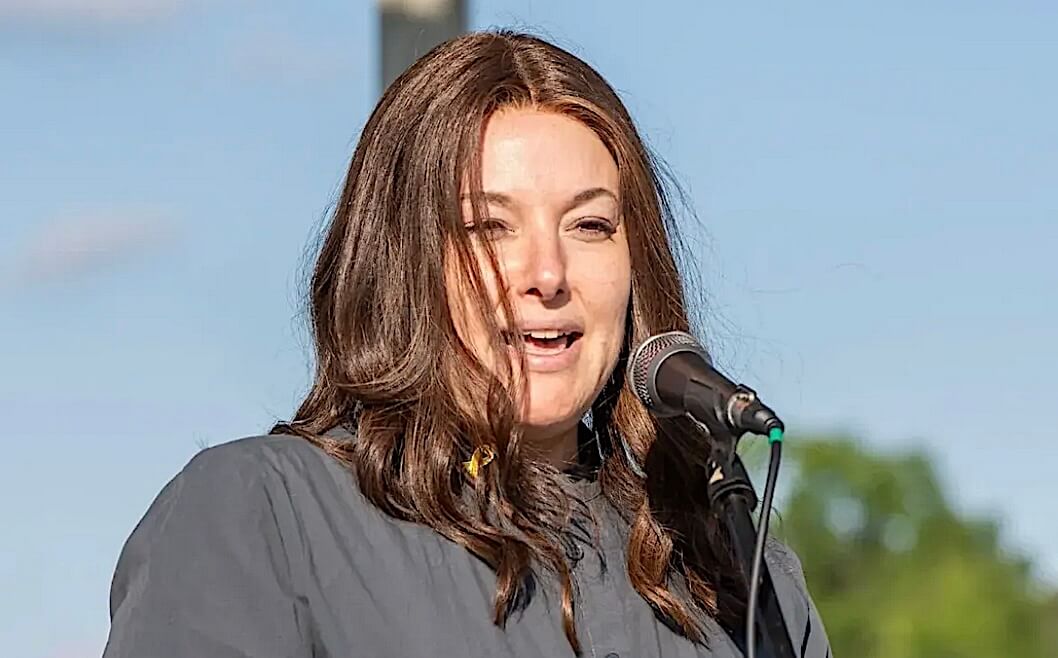It’s Not About Leaving France — Our Question Is How To Stay

Image by Getty Images
“Is there a future for Jews in France?” I might just as well have poured a Dr Pepper into the wine glass of Nicolas Weill. The cultural and literary journalist for Le Monde looked at me from across our corner table in a small restaurant specializing in provincial fare. “This sort of question is an insult to the past,” he replied. His words as sharply cropped as his gray hair, Weill added: “Of course there’s a future; the question is what kind.”
In April, in search of answers to this question, I flew to France to meet with journalists and rabbis, writers and filmmakers, Parisians and suburbanites, Jews and gentiles, new acquaintances and old friends. It was a question that has weighed on France since what many now simply call “l’évènement,” or “the event”: the massacre at Hyper Cacher in early January. More than three months have passed since Amedy Coulibaly, in the immediate wake of Chérif and Saïd Kouachi’s rampage at the offices of Charlie Hebdo, burst into the kosher supermarket in Paris. Before the police killed him, the self-identified member of the group known as the Islamic State slaughtered four people for the crime of being Jewish. Had it not been for others taking refuge in a meat freezer, the horrific toll would have been even higher.
These mass killings, while unprecedented, were not anomalous. Instead, they were the climax of a series of grim events that have forced French Jewry not just to confront their nation’s past, politics and principles, but also to reassess their present and future as French citizens.
F or much of the 70 years following the fall of the collaborationist and anti-Semitic Vichy regime, French Jews had little reason to wonder about their place in the nation. Out of season as an ideological worldview, out of bounds as a theological stance and out of order as a political platform, French anti-Semitism seemed slated for the museum of historical curiosities. Despite the occasional hiccups, like Charles de Gaulle’s description in 1967 of Jews as an “elite, domineering, and self-confident people,” the place of Jews in French society was no more controversial than that of Bretons or Basques.
Controversy returned, however, by the end of the 20th century. The bombing of the rue Copernic synagogue in 1980, the gun attack on Jo Goldenberg’s restaurant two years later, and the exhumation and impaling of a skeleton in the Jewish cemetery of Carpentras in May 1990 all cast long shadows across the country.
Yet these acts, in particular Carpentras, also galvanized the French. More than 200,000 demonstrators, led by President François Mitterrand, marched through Paris to express their solidarity with French Jewry. The outrage rippled across the entire country. Later that same summer, I boarded a bus in Carpentras to visit the cemetery. The driver, no doubt guessing the reason for my trip, spoke to me of his shock and shame over the event. As we wound our way through the arid and hilly landscape, I listened to him and thought, “Yes, this is the France I know and admire.”
Hate crimes, lest we forget, also rained down on French Muslims during this period. Between 1980 and 1994, anti-Muslim graffiti and pamphlets spread like a pestilence; more than two-dozen Muslims were murdered, and 350 were injured, in race-based incidents. Faced with a common threat, French Muslims and Jews made efforts to collaborate with one another. For a brief and shining moment, the organization SOS Racisme, which coined the famous slogan “Touche pas à mon pote” (“Hands off my pal”), brought together young beurs and feujs, the respective slang for Muslims and Jews. As the writer Tahar Ben Jelloun noted, “Racism is not selective.”
But this moment of solidarity — even hopefulness — soon passed.
As I walked to the offices of Le Monde, where I was to meet my friend Marc-Olivier Bherer, a staff editor at the paper, and his colleague, Weill, I thought about Weill’s work on French Jewry. More than 10 years ago, Weill, an essayist and translator as well as culture editor at Le Monde, published “A Personal History of Anti-Semitism,” which focuses on anti-Zionism, or “anti-Semitism garbed in new clothing.” This new “ism,” Weill believed, was little more than a variation on France’s venerable tradition of anti-Semitism.
Reaching the airy and sweeping curves of the Le Monde building, I saw firsthand the impact of this particular “ism.” This was my first visit to the iconic paper’s headquarters, and I was nervous: Founded after World War II, Le Monde has a long and forbidding tradition of politically and philosophically engaged journalism. I half-expected to find a lobby alive with men and women brilliantly arguing over a new translation of Kant one moment, and upcoming elections in Malaysia the next.
And yet, when I reached the building, graced by a rippling façade across which the paper’s cartoonist, Plantu, had etched two doves, I was brought up short by iron grills blocking off the glass-covered entrance. Walking to the left, then to the right, I finally found an entrance on a side street. A police van, I noticed, was parked across the street. Asked by the concierge to wait outside, I paced along the sidewalk, occasionally glancing at the half-dozen armed gendarmes inside the van. They, in turn, were watching me. My baggy wool overcoat, a source of warmth for me, was a source of suspicion for them. “Je suis Charlie,” I suddenly realized, also meant “Je suis surveillé”: I am being watched.
Over the comforting hum of conversation and laughter in the restaurant where Bherer and Weill took me, I asked about the comparison often made between the interwar years and the current time in France. Last year, Roger Cukierman, president of the Representative Council of French Jewish Institutions (known under the acronym CRIF), had described the near-riot outside a Parisian synagogue as reminiscent of Kristallnacht. He returned to this comparison following the horrible events at Hyper Cacher and Charlie Hebdo, connecting these acts to an interwar period swept by violent gusts of anti-Semitism.
Weill impatiently dismissed such comparisons. That was then, he insisted, while now is now. The 1930s, he recalled, climaxing with the collaborationist regime of Vichy, represented a variety of “state anti-Semitism” — worlds apart from France’s current experience. How different, he noted, was the present government’s response after Hyper Cacher, when Prime Minister Manuel Valls, in a speech in the National Assembly, expressed his horror that French citizens were murdered because they were Jewish. As the chamber swelled with applause, Valls exclaimed, “Without the Jews of France, France would no longer be France!” Contrast this to 1936, when Léon Blum became prime minister of the Popular Front government. In the National Assembly, the deputy Xavier Vallat — who would become, in a few years, the commissioner-general for Jewish affairs under Vichy — lamented that, for the first time, “this old Gallo-Roman land will be governed by a Jew.”
The rise in anti-Zionism, Weill told me, now draws elements from both the extreme right and extreme left, bringing together figures like the theorist (and former house intellectual for the Front National) Alain Soral and comedian Dieudonné M’Bala M’Bala. These men not only delight in flashing the quenelle — the inverted Nazi salute invented by Dieudonné (the comedian’s stage name) — and claiming that the Holocaust is a hoax, but also in insisting that Israel manipulates the global economy and politics. For Weill, while this merging of these two ideologies, until recently at odds with one another, is new, their target remains the same: the Jew.

Image by Robert Zaretsky
When Weill left for another appointment, I took a stroll with Marc-Olivier in a nearby park. Weill, I thought, seemed shocked by January’s events, but not surprised. And yet Marc-Olivier seemed both shocked and surprised, as he quietly told me about his experience during the notorious jour de colère, or Day of Rage demonstration last year in Paris. On a raw and rain-swept January day, a demonstration that attracted, the police concluded, 17,000 participants — but, according to the organizers, more than 150,000 — flicked a massive quenelle directly at the state, the government and French Jews. While groups ranging from the radical left to the radical right participated in the march, the extremes met in a common hatred of Jews. In front of police and cameras, knots of young demonstrators shouted repeatedly, “La France aux français” [“France for the French”] — the slogan coined by Edouard Drumont, the anti-Semitic 19th-century author who helped launch the Dreyfus Affair. Any doubt about the phrase’s meaning was quickly dispelled by other chants: “Juif! Juif! Juif! La France n’est pas à toi!” [“Jews, you do not belong in France!”] and “Mort aux sionistes!” [“Death to the Zionists”].
The march lurched down a boulevard not far from the apartment where Marc-Olivier lives with his wife and son. Until that moment, he told me, anti-Semitism had been for him abstract and anomalous. Even the awful events in Toulouse seemed distant and disconnected, something of an historical one-off. But the march, Marc-Olivier told me, changed all that. Most shocking was the mixture of France’s traditional anti-Semitism and the anti-Zionism now festering in the nation’s suburbs. As we passed a father laughing with his child at a playground, Marc-Olivier shook his head as if he still heard the shouts from his terrace: “I wish I could be as optimistic as Nicolas.”
Growing up in New York, my childhood was a world divided between the forces of light (Mets) and darkness (Yankees). This cosmic struggle carried into the Passover Seder at my grandmother’s apartment, where family members from Queens and the Bronx collided each year. Were you to ask me about plagues, I would have replied that they wore black pinstripes.
Not so at the home of Annette Lévy-Willard, the veteran journalist at Libération, where I was invited to spend the Seder. More than a dozen friends and family had gathered, and after the ritual reading of the 10 plagues, they added their own. The candidates were bombers, but not the Bronx variety. Instead they were movements like Islamic State and Boko Haram. One guest mentioned the xenophobic, extreme right-wing French political party, the Front National, but it seemed as ritualistic— as dépassé —as the mention of toads.
No one at the Seder believed, as did Cukierman, that Marine Le Pen, the FN’s charismatic leader, was “personally irreproachable,” but her efforts to shed the neo-Nazi skinheads, reactionary Catholics, Holocaust revisionists and rabid anti-Semites who had populated the party when her father, Jean Marie Le Pen, ruled it, had clearly removed her from the list of the biggest threats. Instead, the banlieues, the suburbs, were the evening’s great subject of conversation and contention.
The grim and decaying outer rings of Paris have become less a physical than a metaphysical state, if only for those who do not live there. The suburbs have become home to many families of North African origin, piled into vast housing projects that, glimpsed from a train window, resemble massive and chipped Lego blocks scattered willy-nilly across the landscape. But the suburbs also embody what the political scientist Laurent Bouvet calls “cultural insecurity” — namely, the fear and anxiety felt by many Frenchmen and women who no longer recognize themselves in their own country.
Inevitably, such insecurity is now a common sentiment among even the most assimilated Jews. Before we sat down to dinner, I had a long conversation on this subject with one of Lévy-Willard’s children, Tom Boeken. A graduate of France’s elite engineering school, Polytechnique, and now working as an emergency room doctor, Boeken described the January attacks as a turning point not just for him, but also for his non-Jewish friends. Neither the earlier anti-Semitic attacks nor the Day of Rage march succeeded in galvanizing their attention. It was only with Hyper-Cacher, he said, that these friends understood the peculiar experience of being Jewish in France. When I asked if he could see himself as a Jew anywhere other than France, Boeken nodded. France was his home, but it was no longer necessarily his future.
“Let me show you something,” Boeken said as he handed me his smart phone. I flipped across image after image of anti-Semitic graffiti scrawled on a sidewalk. They were all plays on the now-famous slogan “Je suis Charlie.” Instead of “Charlie,” though, were the names “Faurisson,” the infamous Holocaust denier, and Dieudonné. When I asked Boeken where he had found these photos, he gave a wan smile. He had snapped them outside his apartment in the heart of Paris, near the Bastille, weeks after the January demonstration against the massacres.
These tags, or graffiti, reflect the morphing of traditional anti-Semitism. Many observers trace the origins of this new form of anti-Semitism to the birth of what French sociologist Marc Hecker calls the French Intifada. Spurred by the uprising in the occupied territories in 2000, French youths, many of North African heritage and living in the country’s blasted suburbs, grew more militant and violent, a process that seemed to climax in the riots of 2005. In effect, the conflict between Israel and Palestine was exported to France, and anti-Zionism merged with anti-Semitism — an especially compelling hybrid for French youths whose grim social and economic circumstances seem to mirror the lot of Palestinians. Though many of these youths neither know where Palestine is on a map nor understand the history of the conflict, they not only identity with the Palestinians, but also identify French Jews with Israelis.
Hecker asked me to meet him for a drink at the Comptoir du Panthéon, a café in the Latin Quarter that sits in the shadow of the Panthéon, France’s neoclassical monument dedicated to the secular reign of reason and ancient Roman virtues. A specialist in questions of national security at the French Institute of International Studies (IFRI), Hecker waved to me from a corner table at the café. As tourist buses lumbered up and down the steep street leading to the Panthéon, we sat down and I asked him to draw a group portrait of young men like the Kouachi brothers and Amedy Coulibaly, the most recent and notorious French recruits to terrorist organizations like Islamic State.
Hecker smiled: The problem, he noted, is that there is no single portrait. The popular profile of a young, single male of North African origin trapped in a dysfunctional family in a desolate suburb with neither education nor employment is now atypical. The French-born jihadists, numbering at about 1,500, range across age and professional groups; there are women as well as men; some are married and have families; many (nearly 40%) are converts to Islam. Leaning forward, Hecker added that one or two of these converts were Jewish. While some are thrilled by blood lust, others, he noted, are driven by “humanitarian” reasons. The traditional portrait of the terrorist, in a word, now resembled Picasso in his cubist phase.
When I asked him about the future of Islamic terrorism in France, Hecker turned dire: “Something is going to happen.” Given the vast number of civilian targets in France, and limited material, financial and legal means of the country’s intelligence and police forces, Hecker’s pessimism seemed warranted.
It is tempting to conclude that a growing number of French Jews have decided they would be better protected in Israel than in France. However, the number’s significance — a rise, from 7,000 in 2014, to as many as 12,000 leaving for Israel this year — is unclear. Like many others, Hecker warned me that France’s struggling economy and top-heavy bureaucracy are no less a driver to this uptick than are fear and anguish. But then, with an astonished look as if he himself did not believe what he was saying, Hecker said that French Jews were justified in their fear. “Look,” he sighed, “Jews have been killed in France.” After a brief pause, he added: “If you had told me before that French Jews would be killed because they were Jews, I’d have replied: ‘Come on!’ But not now.”
Like many of the younger French Jews with whom I spoke, Hecker was frustrated by a number of recent remarks made by Cukierman. He winced over Cukierman’s parallel between interwar anti-Semitism and its present incarnation, and rolled his eyes over Cukierman’s comparison of last year’s near-riot outside a Paris synagogue to Kristallnacht. All this struck Hecker as bad history and worse leadership. Rather than sharpening the French Jewish community’s fears with unfounded comparisons, far better, he said, to found alliances with other sectors of civil society, especially the Muslim community.
The problem, though, is that official representatives of France’s 5 million French Muslims are even less representative than CRIF is of the country’s 400,000 Jews. Dalil Boubakeur, rector of Paris’s Grand Mosque and director of the French Council of the Muslim Faith, has long been one of the French Jewish community’s most important interlocutors. Yet for many suburban Muslim youths, Boubakeur, no doubt a well-intentioned man, is little more than a bureaucrat in the paid service of a discredited state.

Allies? CRIF President Roger Cukierman (left) and Paris Mosque rector Dalil Boubakeur speak to the press in February after meeting with the French president. Image by Getty Images
For Yonathan Arfi, a vice president of CRIF, this poses a daunting challenge. I met with Arfi at the CRIF offices on a small street in the heart of the Latin Quarter. While the building was nondescript, less so were the white police vans parked on either side of the street, along with commando-garbed officers at the entrance. When Arfi, a young man with thinning hair and an intense gaze, met me inside, he told me that security at CRIF has always been intensive. The only change since January, he added, is that the police now carry submachine guns. I nodded my head, uncertain of whether this was a reassuring or unsettling observation.
Here, as elsewhere during my trip, I was reminded of Philip Roth’s remark, “What snow is to Eskimos, history is to the Jews.” Once we settled into a windowless office borrowed from a colleague, Arfi offered his own gloss on the January terrorist attacks, insisting they make full sense only if placed in the context of recent French history. In fact, Arfi suggested, it is only now that French Jews again had a role in that history. Puzzled, I asked in what way.
Crossing his arms and speaking at a rapid clip, Arfi set out to explain his remark. “Between 2000 and 2015,” he said, “we felt we had no place in the national narrative. But since January, there’s been a change in French society.” During the 15 years leading to Hyper Cacher, French Jews thought they were alone in recognizing, much less combating, an unprecedented spike in anti-Semitic crimes. Many condemned — fairly or not — the perceived sluggishness of the Socialist government under Lionel Jospin, in a period of “co-habitation” with the conservative presidency of Jacques Chirac, in its response to these activities. No less alarming was the absence of sustained public outrage in response to the kidnapping, torture and murder of Ilan Halimi in 2006, or to Mohammed Merah’s murderous spree in Toulouse six years later, or to last year’s Day of Rage demonstration.
The question for Arfi was not whether this series of events in France reprised the anti-Semitic turbulence of the 1930s; instead, it was how French Jewry would respond this time around. He worried over a tendency, deeply ingrained, to privilege vertical integration and forge close ties with the state and its institutions. Always necessary, perhaps, yet never sufficient, such an approach can prove crippling, especially when the state itself becomes discredited, as it sometimes appears in France.
As our conversation drew to an end, Arfi told me: “We’re at a turning point in the history of French Jewry.” Would French Jewry turn, though? Arfi insisted on the options now open to French Jews. The obvious candidate, horizontal integration — building out into civil society — works only when credible and willing partners exist. But the Muslim young at best ignore Boubakeur. The same is true for Hassen Chalghoumi, the imam of Drancy, who appears at many events choreographed by CRIF or the government. For Oliver Roy, the noted scholar of Islam in France, Chalghoumi is little more than an “Uncle Tom” figure and a source of embarrassment for Muslim youths.
Roy has frequently urged the state to promote, “through politics and media, the emergence of a new generation of Muslims and a new elite.” In the short term, though, the options remain limited. As Arfi said with a sigh, “We cannot invent representative institutions for the Muslim community.”

Image by Getty Images
There also may well be a crisis of representation within French Jewry. Few institutions come more vertical than the Consistoire, created by Napoleon in 1807 to represent French Jewry. A product of Napoleon’s centralizing zeal, the Consistoire guaranteed a Jewish voice in national affairs, but silenced other voices within the Jewish community. Formed by Orthodox Jews, the Consistoire, to this very day the principal interlocutor with the French state, has remained under their leadership ever since. It is a leadership trailing the wisps of Napoleonic autocracy, which has been less than tolerant with dissenting Jewish voices.
Just ask, as I did, Delphine Horvilleur. For many in the French Jewish community, Horvilleur has three strikes against her: She is a liberal, a feminist and a rabbi. Her synagogue, burrowed in the bowels of the Centre Commercial Beaugrenelle, a towering complex of stores, gyms, pools and restaurants on the Left Bank, is one of several belonging to the Liberal Jewish Movement in France. Though the bell has been rung repeatedly at the Consistoire’s door, it has yet to be answered. This situation breeds not just discontent, but also hypocrisy: Horvilleur is the former student and friend of the current chief rabbi, Haim Korsia, whose official position denies the legitimacy, if not very existence, of her synagogue.
Shortly before she was to lead the Friday night service for Passover, I met with Horvilleur at her office. Her time, I knew, was a precious commodity. Along with her many duties as the rabbi of a 1,200-family congregation, Horvilleur is also the author of the controversial book “En tenue d’Eve: Féminin, pudeur et judaisme” [“In a Birthday Suit: Feminism, Modesty and Judaism”], editor of the quarterly magazine Tenou’a and the mother of three children.
Yet I realized just how precious time was for her only when, late for our rendezvous and stumbling dazed and confused through the concrete and steel maze, I received an imperious text: “Where are you?” Lurching past bowling alleys and parking garages that feed into the complex’s twilit tunnels, I soon spied a knot of Kevlar-armored soldiers and realized I had finally found the synagogue. Never had I thought I’d be so relieved to see submachine guns. Passing through the security guards at the entrance, I took the elevator to the third floor, where Horvilleur, impatient yet graceful, met me outside her office with an extended hand.
“When I speak to my American friends,” Horvilleur joked, “I feel like a panda in a zoo for endangered species.” Seeing my furrowed brow, she explained the sense of isolation she felt within a religious community that itself feels increasingly isolated within the national community. Ironically, Horvilleur’s efforts to build bridges to French Muslims struck me as more promising than those being built to Orthodox Jews. In the latest of a series of visits by Muslim schoolchildren earlier that day, Horvilleur welcomed them to the synagogue for snacks and conversation. No less significant, the winter issue of Tenou’a, devoted to the question of Muslim-Jewish dialogue, challenges the traditional (and fatalistic) casting of the current conflict in terms of the biblical story of Isaac and Ishmael.
Horvilleur exhaled softly: This issue of the magazine, she said, appeared just days before the massacre at Hyper Cacher. Horvilleur was no less dismissive than Hecker and Weill of the parallels made to the 1930s. “The present situation,” she told me, “is different.” Breaking with her fluent English, she added that French Jews found themselves in a situation that was unprecedented. Equally unprecedented, I found, was Horvilleur’s determination to overcome or repair the trauma of recent events through interfaith dialogue. In fact, more than once she expressed her frustration at the tendency of French Jewry to “focus on particularistic concerns.” Instead, she insisted, their task was tikkun olam, or repairing the world. Or, at the very least, repairing French society.
Horvilleur smiled when she heard a frantic knocking at her door. Musicians and congregants participating in the evening service had gathered outside, eager to meet with her. As I stood up and began to gather my notes, Horvilleur walked to the door and paused before opening it. With a pained smile, she looked at me and asked: “Am I blind? Is there something I’m not seeing in today’s events that others do?”
The night before I left Paris I met an old friend, Maïka Haddad, at a café on the Place des Vosges, the 17th-century jewel of urban design in the Marais district. Born in Tunis, Maïka is a “tune,” or a Tunisian Jew, part of the great wave of Jewish immigration to France in the wake of Tunisia’s independence in 1956.
While time has carved its passage on our faces as surely as it has on the square’s façades, Maïka’s personality has remained untouched. From the early 1980s, when we first met and he was working the counter in a coffee shop in Vermont, to his current life as a successful businessman living in a well-to-do Parisian suburb, Maïka has not changed. Warm and welcoming, he has always been a depressingly optimistic and resilient fellow.
I found myself no less depressed this time around: Maïka was as buoyant as ever. After embracing, we sat down at a table under a heat lamp on the cafe’s terrace — cold and wet, April is always the cruelest month in Paris — and he caught me up with news of his family. His father had passed away recently, and Maïka had become, somewhat unwillingly, the family patriarch. Yet the family was dispersing: His sister Annie, I learned, was moving to Israel with her family. They have lived for several years in Pantin, a northern suburb of Paris that teems with dozens of different ethnic and religious communities. Though the suburb is known for its vive-ensemble — an ugly phrase recently coined by the government for the perfectly good word “tolerance” — Annie and her husband, who are Orthodox Jews, worry over the safety of their children.
When I asked how he felt about Annie’s decision, Maïka shrugged his shoulders. A sporadically observant Jew, he was clearly frustrated with his sister. “She insists on living in a ghetto,” he said, referring to Annie’s Jewish neighborhood. As for Annie’s desire to live in Israel, Maïka was no less dismissive: “It’s just another kind of ghetto.” There was a pause in our conversation, and we looked out at the square. The Marais, of course, had become something of a ghetto at the end of the 19th century, when tens of thousands of Eastern European Jews, fleeing persecution and pogroms, settled there. But this haven turned into a theater of horror scarcely two generations later, when French police hounded thousands of Jews, foreign and French, and deported them to Auschwitz.
The irony was not lost on Maïka. Yet he remained grateful and faithful to the republican ethos that welcomed the waves of immigration from Eastern Europe in the 1880s, as well as his own from North Africa in the 1950s. It was getting late, and as we got up to leave, I asked him if he ever thought about packing his bags. The very notion made Maïka laugh. “I love France, I love the Republic,” he replied. “It’s good to be French.”

Shattered: A rally last July in Sarcelles, a northern Paris suburb, descended into violence as an angry pro-Palestinian crowd raged against local Jewish businesses. Image by Getty Images
As we walked to the metro, I could not help but think back to Horvilleur’s question: “Is there something I am not seeing?” This is the sort of question that bedevils historians. Like the Watergate prosecutors, we want to know what our historical actors knew, and when they knew it. But in addition to wanting to know what they ultimately did with this knowledge, we also want to know what they could do with it. The pursuit of these questions takes some chutzpah, since historians struggle to do these very same things with the decisions they make and the paths they take in their own lives.
No matter how closely we study the past, how closely we look at the connections between words and acts, contexts and texts, the past’s movement eludes us. How easily, I thought, societies can slide from the unexceptional to the unspeakable. How a word that Napoleon insisted was not French — “impossible” — could become a fact of French history. How it had happened, just last year, that scores of men and women could march in the heart of Paris, screaming “Death to the Jews” and seeing that demand acted upon by Islamic terrorists. And how all this has happened two generations after a French government had stripped French Jews of their political and civil rights, two generations after French bureaucrats and police had sprung a massive round-up of French and foreign Jews — men, women and children — eventually deporting more than 70,000 in French trains to Auschwitz where they were murdered.
It is, as the French say, compliqué. Theirs is a nation that, in 1940, revoked the citizenship of its Jews, but 150 years earlier was the first in Europe to grant it; theirs is the nation that, in the 1880s, gave the world modern anti-Semitism, but a nation that also gave us immortal figures like Emile Zola and Jean Jaurès, who risked their lives to battle this plague; theirs is a nation whose name has been sullied by the likes of Jean-Marie Le Pen but cleansed by the likes of Manuel Valls. It is a nation that has recently spurred articles with titles like “Is It Too Late For French Jewry?” “Is There a Future for French Jews?” and “Is It Time for Jews To Leave Europe?” But it is also a nation where I heard the same reply from everyone with whom I spoke: “Of course there is a future for us in France!”
As a historian, I have a hard enough time getting the past right. When it comes to the future, I am as clueless as the next person. But I cannot help but think of the late historian Yosef Yerushalmi. In his brilliant book “Zakhor,” Yerushalmi suggested that ever since the destruction of the Second Temple, Jews have filtered their past through that one cataclysmic event. They had as much history as they needed, and everything that followed, including the events of 1492, was forced into this one interpretation. This same perspective, Yerushalmi suggested, tempts us today: We stand, he wrote, “at a juncture not without analogy to that of the generations following the cataclysm of the Spanish Expulsion.”
Is it possible that the dire views of the future of French Jewry, now offered by American journalists, reflect that same catastrophic school of interpretation? Perhaps. But what I know for certain is that France’s past is more complex than such accounts suggest, just as her future is more open and promising than they imagine. Maïka and I stopped at the metro entrance; we were taking different lines. As we embraced again, I smiled as I said to myself, “Next year in Paris.”
Contact Robert Zaretsky at [email protected]
